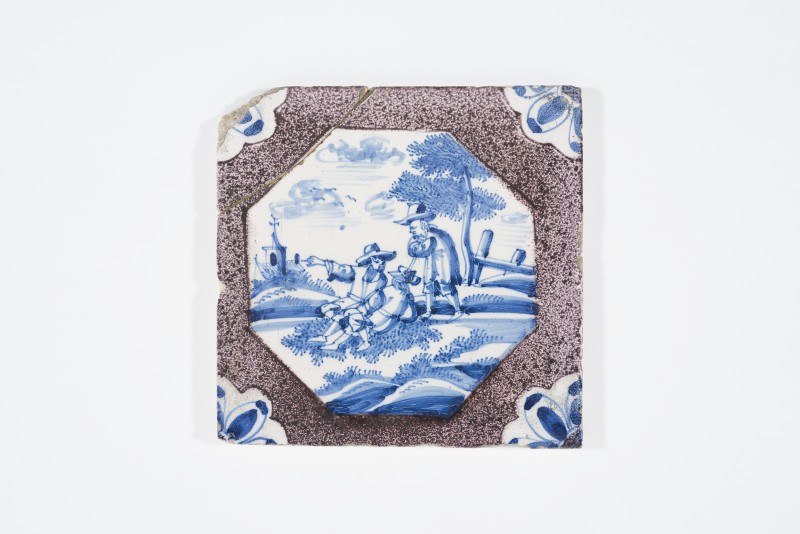Quadratische Fliese mit Darstellung dreier sich ausruhender Männer (Schäfer?) in Landschaft. Ein Mann zeigt nach links, ein anderer steht und stützt sich auf seinem Stock ab. Im Hintergrund rechts Baum und Zaun, links eine Kirche. Der Himmel mit Wolken, in den Ecken Viertelrosetten. Oktogonale Rahmung.
Die Fliese in zwei Teile zerbrochen und restauriert. An der oberen linken Ecke größerer Ausbruch, Glasurabplatzungen an den Kanten.
Alte Inv. Nr. Keramik I. 877
Erwerbung unbekannt (alter Bestand)
en

